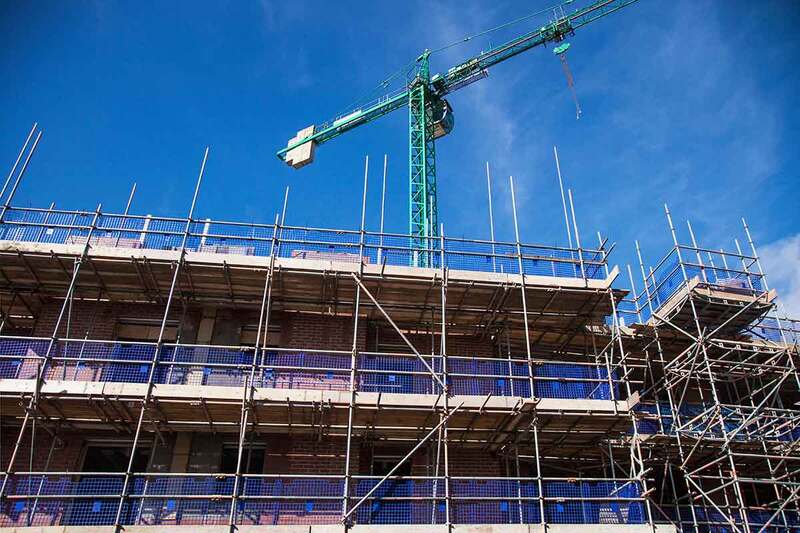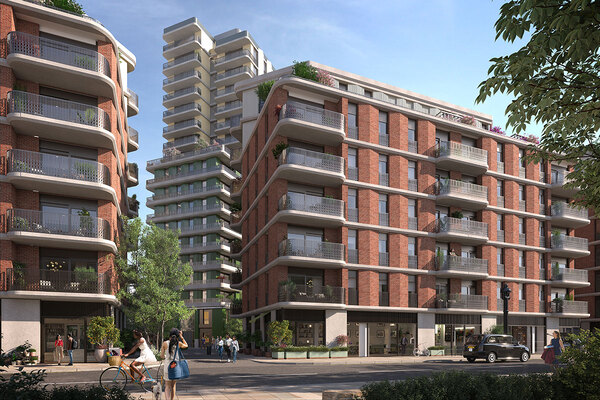You are viewing 1 of your 1 free articles
What does the removal of urban uplift mean for affordable city development?
The urban uplift is out, but affordable housing requirements are up. How will this impact affordable and social housing in and around cities, asks Philip Allin, a director at Boyer
Planning took centre stage at the opening of the Labour Party Conference, with deputy prime minister and housing secretary Angela Rayner’s keynote speech reiterating the government’s aim to build 1.5 million new homes during the current parliament.
Yet, many in the planning and development sector are already questioning how realistic the government’s plans are. A recent report by The Housing Forum recognises that housing completions are due to slump to around 160,000 in 2024 and housing delivery will need to reach 450,000 in 2028-29 in order to achieve the 1.5 million target – a figure not seen since 1968.
Housing delivery will be substantially impacted by changes in the planning system, notably a revised National Planning Policy Framework (NPPF) and changes to the urban uplift and to affordable housing requirements.
So the question remains: can the policy changes deliver more affordable and social housing, and where?
Currently, the urban uplift places an expectation that new housing be accommodated within cities and urban centres. On the face of it, the proposed abolition of the 35% urban uplift will result in a fall in housing in cities, while surrounding areas, such as the Home Counties, would see significant increases.
However, it is an incredibly crude requirement which does not take into account the ability or capacity for the requirement to be met.
“In the case of London, it is likely that the grey belt will enable the growth anticipated by the government, particularly for new socially rented housing”
In London, the standard method (the tool by which housing requirements are determined), sets targets at 99,000 homes per annum and would be reduced to circa 80,000 homes per annum – but the reduction is significantly above actual recent delivery of just circa 37,000.
Despite the abolition of the urban uplift, a stronger emphasis on the delivery of affordable housing (particularly for social rent) will mean that although overall housing delivery targets will reduce for the biggest cities, there is a greater expectation that more affordable housing will be delivered.
The proposed introduction of the ‘grey belt’ designation is likely to be the primary source of delivering this additional housing.
In the case of London, it is likely that the grey belt (and potential green belt and metropolitan open land release more generally) will enable the growth anticipated by the government, particularly for new socially rented housing. There are hints that this shift is already taking place, as the pledge of protecting the green belt was dropped from the current mayor’s 2024 manifesto.
Furthermore, some outer London authorities are already looking to the green belt to meet their spatial growth aspirations. There is inherent logic to this as inspectors who have examined previous iterations of the London Plan have long identified a review of the green belt as key to accommodating potential development.
Only recently, Boyer won an appeal for 92 homes, of which 48 were affordable housing, on green belt land in Sarratt, Hertfordshire. The inspector found that the scheme’s considerable benefits – its ability to address an acute housing need locally – outweighed the loss of green belt land.
One of the government’s ‘golden rules’ for development in the green belt – a quid pro quo, if you like, to ensure that maximum public gain is obtained from new development in these areas – is that 50% of any new development is affordable housing. Much has been said about the viability implications of this, but given values in and around London, it looks likely that the London green belt may be the most likely location for this new housing.
“not all of this land will meet the proposed definition of grey belt, nevertheless it is indicative of the potential scale and location of new development opportunities”
To put this into context, 22% of Greater London (circa 35,000 hectare) is designated as green belt and almost 10% (circa 16,000 hectare) is designated as metropolitan open land (a designation that is afforded the same level of protection as green belt). This is not spread evenly across London, with more than half of the total area of green belt found in just three outer London boroughs: Bromley, Havering and Hillingdon.
Clearly, not all of this land will meet the proposed definition of grey belt, nevertheless it is indicative of the potential scale and location of new development opportunities.
The government has committed to publishing the final version of the NPPF and standard methodology by Christmas. Although the exact content it not yet known, it is already evident is that the stronger emphasis on housing delivery, particularly affordable, together with the introduction of the grey belt, will provide new opportunities for housing development around London.
Therefore, the removal of the urban uplift is unlikely to have a detrimental impact.
Philip Allin, director, Boyer
Sign up for our development and finance newsletter
Already have an account? Click here to manage your newsletters













